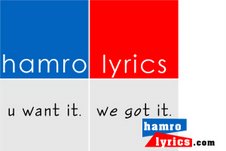Trying to define Web 2.0
Web 2.0 or simply web2 hasn’t caught the hype in our country but is the next big thing in developed nations. In the yesteryears the concept of websites flowed like this, one information provider and many information consumers. But it is a different setting in the present circumstance, now there are many information producers/providers and many information consumers which create a many to many information sharing base.
Web 2.0 may seem like a very technical word trying to specify the version 2 of the current web infrastructure that is becoming a part of our high tech life. But it is not, Web 2.0 is a word coined by O'Reilly Media in the year 2004, that refers to the supposed second-generation of Internet-based services that let people collaborate and share information online in perceived new ways such as social networking sites, wikis, communication tools, and folksonomies. So Web 2.0 is straightforward and clear concept that advocates the websites should be a platform where all the visitors can actively participate.
It is quite clear that Web 2.0 primarily focuses on open content and is supportive to open source. Giving emphasis on community, it is encouraging collaborative works. Hence eventually Web 2.0 tries to achieve information for the people & by the people, so as to parting the traditional Web 1.0 environment where content provider was only one and information consumers were many. In Web 2.0 the numbers of information provides and consumers will be almost same. Web 2.0 is a concept that persuades website viewers to participate and feel the belongingness to the website or the web application.
So you might be asking what are the concrete differences in the new concept Web 2.0 and the earlier one? The answers unfold here, earlier we used to peruse through the Britannica Online encyclopedia where one who is reading if s/he finds new things on that topic is directly not able to add or alter any content but in Wikipedia it is easily possible. In any topic by collaborative effort we get great articles from wikipedia that also at no cost and no legal difficulties. Previously people used to have personal websites, now it is the era of blogging. A weblog, which is usually shortened to blog, is a type of website where entries are made (such as in a journal or diary), displayed in a reverse chronological order. Thus, personal websites have now turned in to blogs the personal web diary of people.
Commercially, people paid for advertisement or other pages on the basis of page view but now in web 2.0 the cost is charged on the basis of cost per click. Earlier it was the concept of publishing and not letting anyone comment on it or even copy it. But now in web 2.0 the concept of participation has prevailed. In web 1.0 there used to be directories or taxonomy of the links and all other things but now it’s the age of tagging or folksonomy with a community effort. The lacking social aspect in the websites has been incredibly stressed in the new concept of web 2.0.
As the websites based on the web 2.0 concept look forward for the participation of all the interested people so it focuses on simple design but rich features. The feature rich interface will give the even novice web users their space to participate in the website. One Nepali website that is totally based on web 2.0 and provides features like blogging, commenting on the text etc etc is http://fossnepal.org. If you know about Free and Open Source Software (FOSS) it is a must see for you, if you don’t know about FOSS then it is a compulsory visit for you.
Eagerly let’s hope that all the websites and webmasters will get the concept of Web 2.0 in near future. Going to Web 2.0 does not mean that you just add a guest book and it’s done. I’m not even advising that all website should follow web 2.0 as a company websites need not follow web 2.0. But if the webmasters transform their Web 1.0 websites to the new Web 2.0 it will be beneficial to both parties the developers and the website visitors.
Geshan Manandhar
About 700 Words



No comments:
Post a Comment